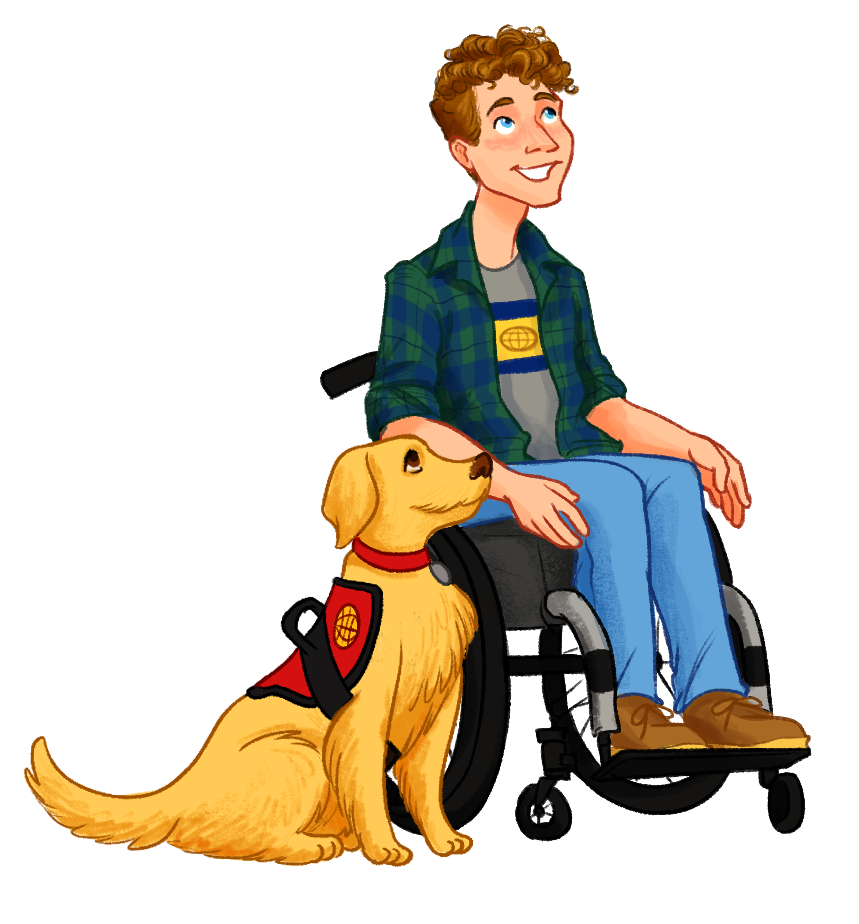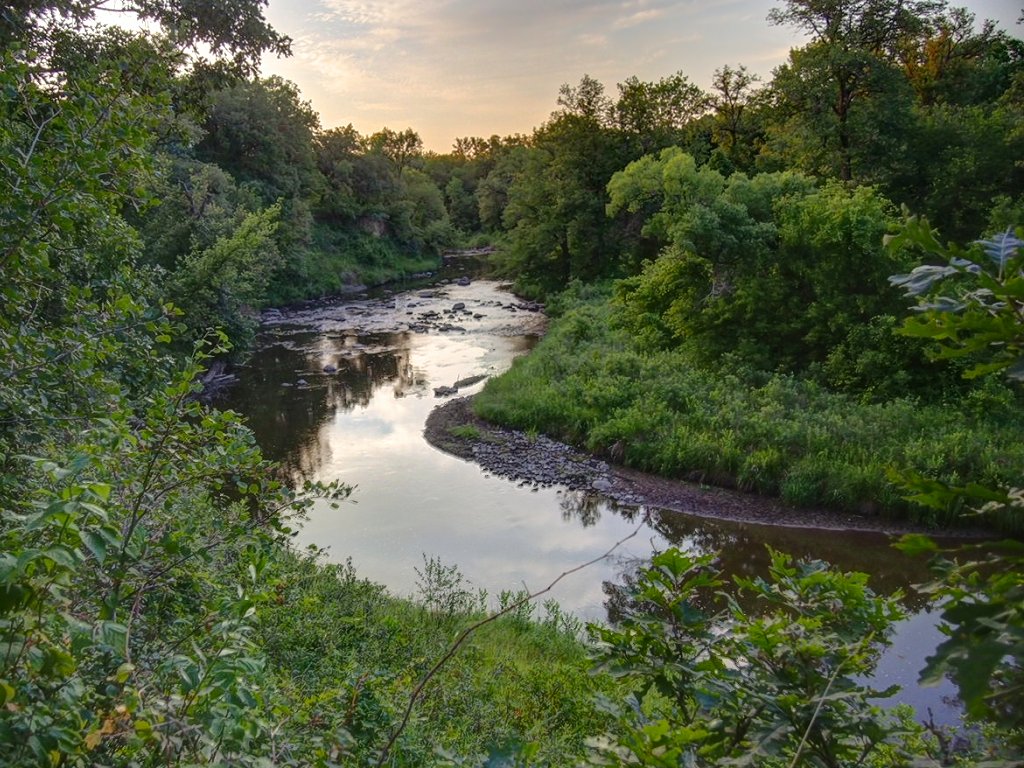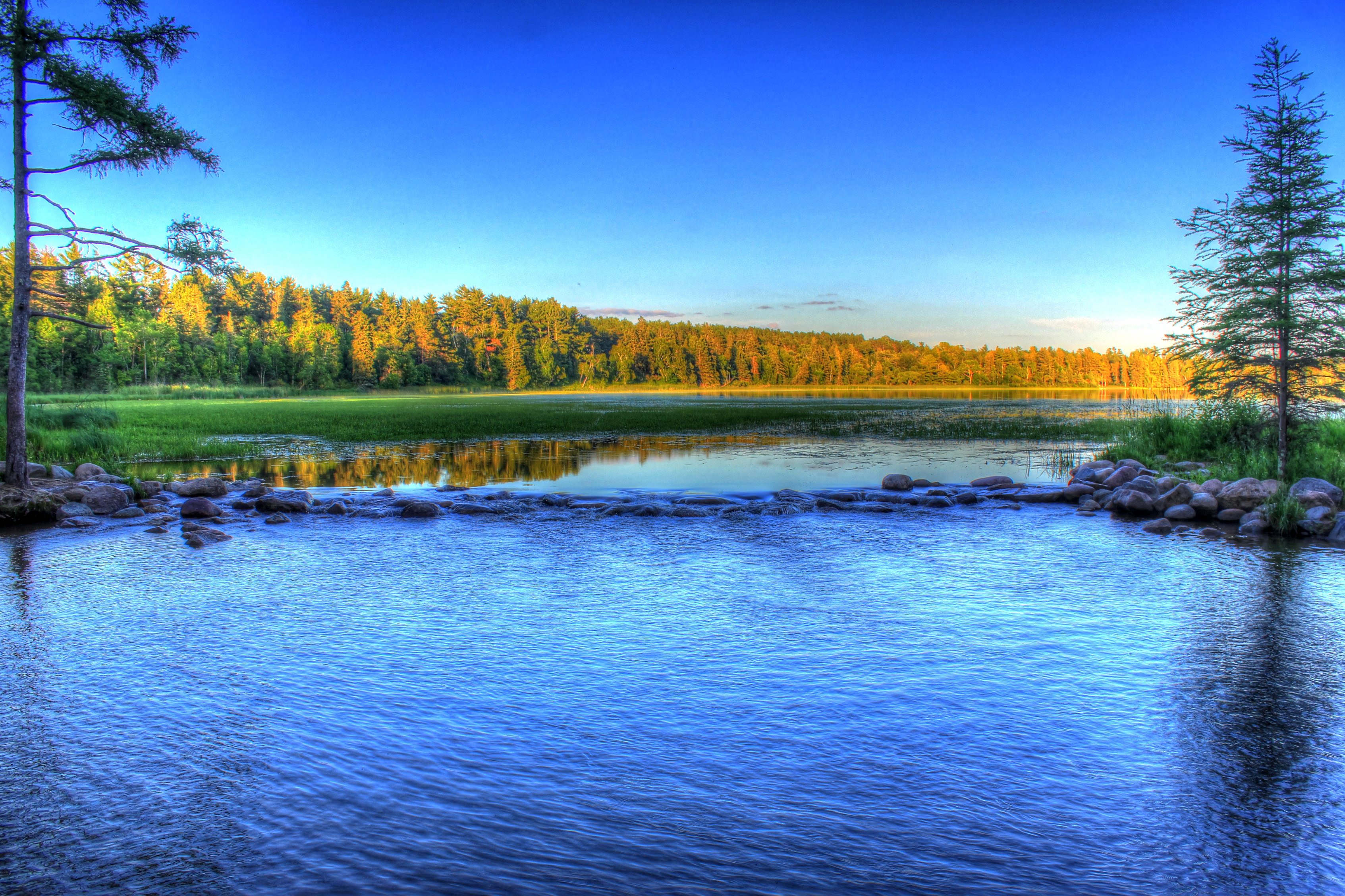uncover
Our Ecosystem

What are the different kinds of freshwater ecosystems in Minnesota?
Minnesota's freshwater sources create ecosystems in and around the water that are home to a large diversity of plants and animals. An ecosystem is a place where all the living organisms (plants, animals, microorganisms) interact with each other and with nonliving parts of their environment (water, sun, temperature, soil).
Ecosystems are all about relationships! In each ecosystem the living things (plants, animals, microorganisms) have relationships with each other. Healthy ecosystems have a balanced food web of producers (plants), herbivores (plant eaters), carnivores (animal eaters), omnivores (plant and animal eaters), and decomposers (dead plant and animal eaters). These living things also have relationships with the water, the riverbanks and shoreline, weather, and other nonliving parts of their environment. This interconnected web of living and nonliving things creates a healthy balanced ecosystem that provides the basic needs for each species.

How are freshwater ecosystems alike and different?
Minnesota's freshwaters have river and stream ecosystems, lake and pond ecosystems, and wetland ecosystems.
The large size of the Mississippi River has created water ecosystems that are uniquely different from the ecosystems in Minnesota's other smaller rivers!

Wetlands are areas where water and land meet, like swamps, marshes, and bogs.
- Swamps have mostly woody plants or trees.
- Marshes have mostly non-woody plants like grasses, reeds, or sedges.
- Bogs are mostly peat moss with poor soil.
Both aquatic (water-dwelling) and terrestrial (land-dwelling) organisms interact and make their homes in these wetland ecosystems. Water depth, seasonal water level changes, and closeness to rivers and lakes all influence the types of plants and animals living there. Wetlands tend to have very high species diversity, with many animals dependent upon these important habitats for nesting, breeding, and migration rest stops.
River and stream ecosystems vary by size, depth, and speed of water flow. They have higher amounts of oxygen mixed in with the moving water (higher dissolved oxygen), the water tends to be clearer (has more clarity) than other bodies of water, and more species than in those found in still-water lakes or ponds. River species tend to require more oxygen and are more mobile over their lifetimes.


Lakes and ponds vary by size, depth of water, and lake bottom sediment. Because they are standing bodies of water, oxygen is less able to mix with the water (lower dissolved oxygen) and visibility through the water can be lower (the water has less clarity). Lakes and ponds that are connected to streams and rivers often have more species diversity, since organisms in them can move among different ecosystems, while isolated lakes and ponds have less species diversity.
If ecosystems are all about relationships, what happens if one of the living or nonliving things changes?
An ecosystem is described as a web of life, or a system of interconnected parts. All living and nonliving things are in relationship with each other. So, when one part of the ecosystem changes, other parts are affected. If the number of a particular animal species increases or decreases, that will affect plants and other animals in its food web. If the abundance of a plant species changes, the food supply for some herbivores will change, while animal shelter and nesting sites might also be affected. If the amount of water in a river, lake or wetland changes, habitat size for plants and animals changes. If the weather, shoreline, or river banks change, the ability of some native plants and animals to survive and thrive will be affected.
A healthy ecosystem means each part is in balance with the other parts, and the living things in that ecosystem can survive and thrive.
